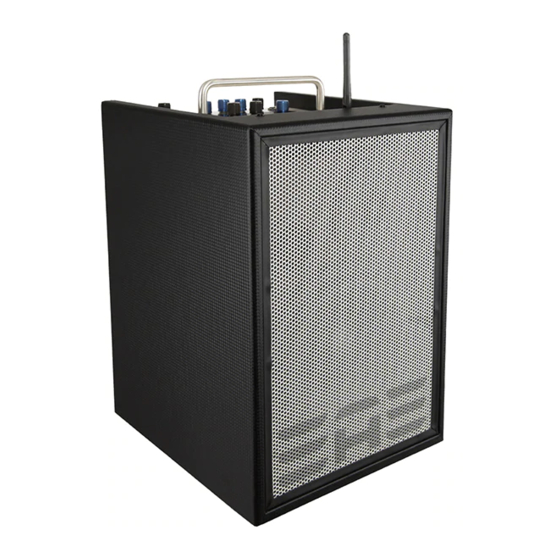Elite Acoustics Engineering A4-8 Snelstarthandleiding - Pagina 10
Blader online of download pdf Snelstarthandleiding voor {categorie_naam} Elite Acoustics Engineering A4-8. Elite Acoustics Engineering A4-8 13 pagina's. Live-performance studio monitor with 4 channels, mixer, effects, and bluetooth

HOW TO DEAL WITH ACOUSTIC FEEDBACK
Simply put, the annoying shrilling howl of growing and untamed feedback is the result of "in-
phase" frequencies getting together and being reinforced by the sound system and environ-
ment.
Phase Switch – since the purpose of the Phase Switch is to reverse the polarity, the first line
of defense is to change the phase, which can sometimes be a cure all by itself. This has the
effect of changing the phase relationship between the amplified signal and live sound, which
can break up some "in-phase" reinforcing components. On the other hand, it's preferred if we
can leave the phase set to provide the most natural and balanced sound.
Notch Filter – Another way to prevent "in-phase" reinforcement is to simply find and "notch"
out the offending frequency. The approach is straight forward; with the Notch set to full "cut"
(counter clockwise), slowly rotate the Notch Frequency to align with and cancel the offensive
tone.
Phase and Notch – probably the most widely used approach is to start without the notch
filter engaged, and to bring up the gain and or volume to encourage feedback. Changing the
Phase will change the frequency of the feedback. Leave the Phase set to whichever setting
produces the higher pitched note.
Next, use the aforementioned Notch technique to hone in on and prevent the feedback. Keep
in mind, fighting feedback in this manner may or may not appeal to your taste in overall tone.
It's certainly fair to experiment and try it the other way around, i.e., Phase switch to stop HF
tone and Notch to cutout the LF tone. After all, Live Sound is an Art and when it's all said and
done tone is King.
ABOUT EQ AND PHASE SETTINGS
High – used to add sibilance and crispness to your sound, with the knob at 12:00, there is no
boost or cut to the high frequency content.
Mid – Helps control the clarity of your overall mix and should be adjusted to suit lower or
higher volume performance levels. Boosting the mids helps speech clarity and intelligibility at
lower volumes while cutting the mids produces a more natural sound at higher volumes. The
Mid frequency selection knob allows for a range extending from high LF to low HF. When set
to 12:00 the Mid frequency peak is around 1.2k Hz, with +/- 12dB of boost or cut depending
on the setting of the Mid knob. Here again, with Mid set to 12:00 the mid control is effectively
out of the circuit.
Low – In general, lower volumes can benefit from LF boost to help bring out the bass at
these lower settings, but it is usually left flat or even slightly cut for high playback levels.
Notch – When it comes to the mechanics, Notch filtering is very much like the adjustable
mid frequency described above. However, the frequency range is much lower, and the filter
itself is much tighter, hence the term "notch." When used in "cut" mode, this is very effective
in managing feedback, which is explained in some detail in our Feedback section. However,
the notch can be set to cut or boost to allow for the full range of possibilities. Many times
feedback is not an issue, and the artist can take advantage of a particular notch setting to
effectively tweak a final mix to accommodate specific room or instrumentation considerations.
Phase – Use the phase setting that best supports your overall sound and system integration
considerations. For example, Phase can be set to facilitate the best bass response at low
volumes, and it can also be effective as a feedback deterrent, which will be reviewed in our
Feedback section.
